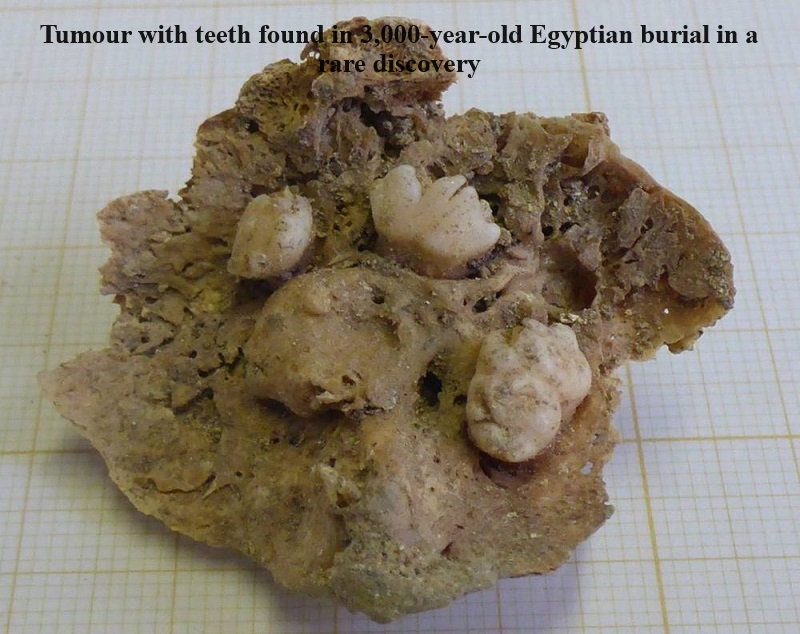
Archaeologists excavating an ancient Egyptian cemetery made a rare discovery – an ovarian tumour in the pelvis of an Egyptian woman buried over three millennia ago. The tumour, identified as the oldest known example of a teratoma, included two teeth. Teratomas are rare tumours that typically grow in the testicles or ovaries. The Cleveland Clinic explains that teratomas can be malignant or benign, often filled with various tissues like hair, teeth, muscle, or bone. They can cause swelling, pain, and infection if ruptured, with contemporary treatment involving surgical removal.
This particular teratoma, discovered in the New Kingdom period cemetery in Amarna, Egypt, is the fifth archaeological case reported so far and the oldest ever found in Africa. The researchers explored four large cemeteries related to Amarna, uncovering the skeleton of a young woman in a burial chamber in the North Desert Cemetery. The woman, likely aged 18-21, was buried with various grave goods, including a deity related to childbirth and a Bes ring, associated with fertility and protection.
During the excavation, a bony mass was found in the woman’s pelvis, containing deformed teeth in two depressions. Bioarchaeologist Gretchen Dabbs from Southern Illinois University Carbondale, who published the discovery in the International Journal of Paleopathology, ruled out other diagnoses and suggested the presence of teeth in the pelvic region indicated an ovarian teratoma. The Bes ring’s placement in the woman’s left hand, folded across her lap above the teratoma, suggested the teratoma was symptomatic, and the woman was invoking Bes for protection, pain relief, or assistance in conceiving and giving birth. Dabbs noted that the woman likely became a wife by 18-21 years but added there was little doubt she was also working in some capacity.

Post Your Comments